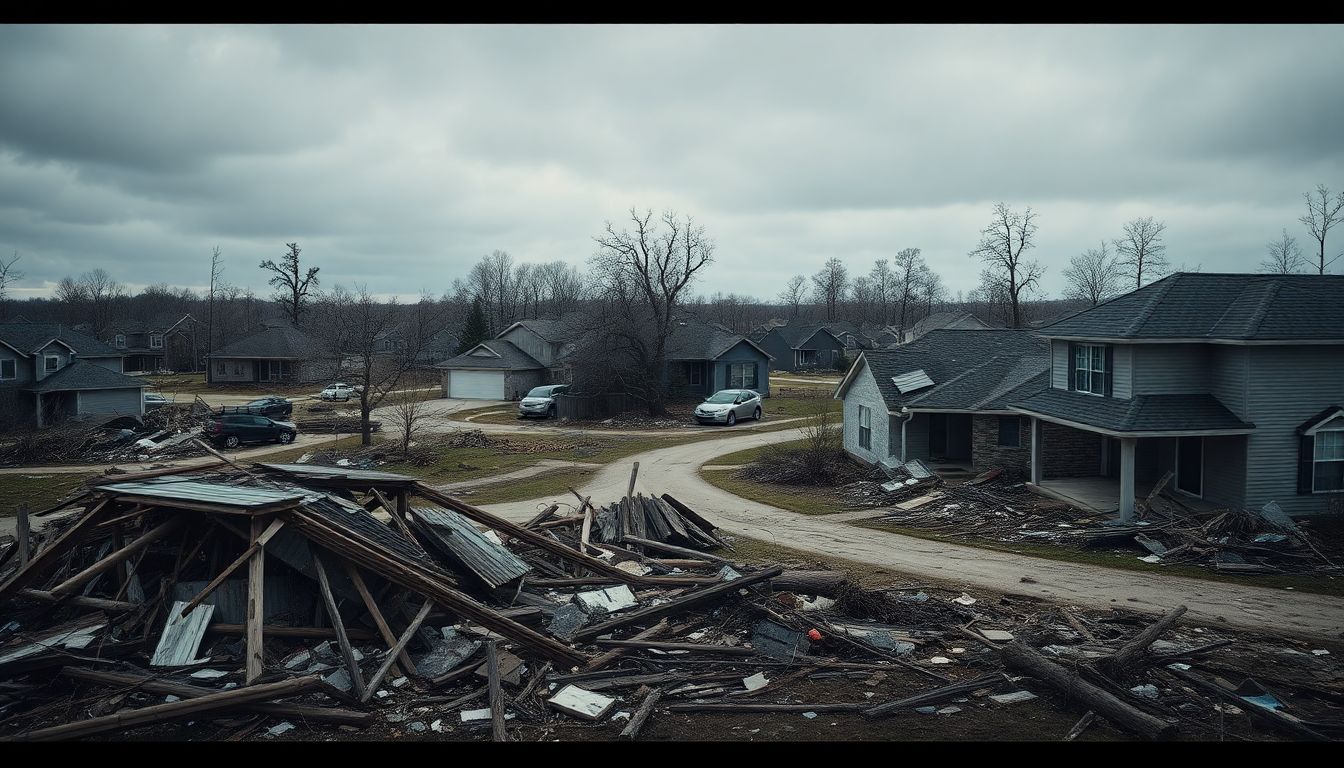
The Path of Destruction: States Hit Hardest by the Tornadoes
Several states felt the tornadoes' devastating power. Communities are now picking up the pieces. Tennessee, Arkansas, and Indiana suffered significant impacts. Lives changed forever.
Tennessee: Widespread Damage and Loss of Life
Tennessee faced a brutal assault from the tornadoes. Areas around Nashville and the central part of the state were hit hard. Residential neighborhoods saw homes destroyed. Businesses suffered major damage. Critical infrastructure, like power lines and roads, also took a beating. This has made rescue efforts even harder.
Arkansas: Hard-Hit Communities Struggle to Recover
Arkansas communities face a tough road. The storms ripped through towns like Wynne, leaving scars. Schools, local businesses, and even the iconic Wynne High School, faced damage. Residents are pulling together, but the challenge is massive.
Indiana: Impact and Casualties
Indiana felt the tornadoes' wrath, too. The southeastern part of the state saw destruction. Homes and businesses near Sullivan experienced awful damage. First responders are working non-stop, helping people get what they need. The community is resilient, but needs assistance.
Understanding the Science: Why Were These Tornadoes So Powerful?
Why did these tornadoes get so strong? It comes down to some key weather ingredients. These conditions created the perfect recipe for disaster.
The Role of Atmospheric Instability and Wind Shear
Think of atmospheric instability as a loaded spring. It’s when warm, moist air sits under colder, drier air. This creates a very unstable situation. Wind shear is when winds at different heights blow at different speeds or directions. When these two things combine, tornadoes can form. They start rotating and become powerful.
Climate Change and Extreme Weather Events: Is There a Connection?
Is climate change to blame? It's a complex question. Scientists agree that a warmer climate can create conditions for more extreme weather. Linking any single event to climate change is tough. Yet, rising global temperatures could make severe storms more common.
The Human Cost: Stories of Loss and Resilience
Behind the numbers, there are real people. People whose lives will never be the same. Their stories of loss and resilience are heartbreaking and inspiring.
First-Hand Accounts from Survivors
"It sounded like a freight train," said Mary from Wynne, Arkansas. "We hid in the closet, praying. When we came out, our home was gone." Such accounts show the raw terror. They also highlight the strength it takes to keep going. Many face an uncertain future.
Community Response: Neighbors Helping Neighbors
In the face of tragedy, communities unite. Neighbors are helping neighbors. Local organizations are providing meals. Volunteers are clearing debris. Acts of kindness, big and small, show the human spirit's power.
Relief and Recovery Efforts: What's Being Done to Help
Help is arriving from many directions. Government agencies and charities are providing vital support. These efforts are critical to get people back on their feet.
Government Assistance: Federal, State, and Local Response
FEMA is on the ground, assessing the damage. State and local agencies are coordinating rescue efforts. Resources are available for those who qualify. It will take time to process everything.
Charitable Organizations: Providing Food, Shelter, and Support
The Red Cross and Salvation Army are providing food and shelter. Other groups are offering counseling services. You can donate or volunteer to help these amazing groups. Every little bit makes a difference.
Preparing for the Future: Tornado Safety Tips
While we can't stop tornadoes, we can prepare. Being ready can save lives. It's important to take steps to protect yourself and your family.
Creating a Family Emergency Plan
Have a plan. Know where to go during a tornado. A basement or interior room is best. Keep a supply kit with water, food, and a weather radio. Talk through the plan with everyone, so everyone knows what to do.
Understanding Tornado Warning Signs and Alerts
A tornado watch means conditions are favorable for tornadoes. A tornado warning means a tornado has been spotted. Pay attention to alerts on TV, radio, and your phone. Act quickly if a warning is issued.
Conclusion
The recent tornadoes caused utter devastation. The Southern US faces a long recovery. Community support, preparedness, and aid are essential. Let’s all do our part to help those affected. Donate to relief organizations. Volunteer your time. Offer support. Together, we can help rebuild lives.